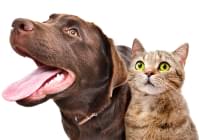Does Your Dog Have Separation Anxiety? Here Are Signs to Look for and How to Help

Do you think your dog might have separation anxiety?
This behavioral problem is more common than you might think in dogs, and if you suspect it in your pet, there's a good chance you're right.
Dog separation anxiety is an issue, but it can be treated and managed with the right plan of action. In the article below, we'll explain how you can recognize signs of separation anxiety in your pet and how you might be able to help on your own. We'll also go over some methods your veterinarian might use in more serious cases, too. Read on to find out more.
Signs of Separation Anxiety in Dogs
Noisy When Left Alone
Dogs who are left alone may start whining, howling, barking, or growling, usually when positioned near the door. Although every dog may do this for a few minutes, if your dog doesn't settle down quickly, she may be suffering from separation anxiety.
Escaping or Trying to Escape
If your dog is an escape artist, this may be an indicator that she has separation anxiety. She may try to escape to be near you, especially if she knows which direction you left in. Escaping may also be related to intact dogs trying to mate with strays in your neighborhood, however, so keep this in mind.
Potty Accidents
Potty accidents, while no one is at home, are one of the most common signs of separation anxiety in dogs. These accidents only occur when the dog is left alone; if the dog has accidents all the time, even when the family is at home, then the problem isn't separation anxiety.
Destructive Tendencies
Dogs may become destructive or aggressive when they are alone. This is due to their fear. They may shred household items, dig holes in the yard, or find other methods of releasing that fear through destruction whenever possible. You may come home to a destroyed sofa if your dog has separation anxiety.
Pacing and Shaking
Dogs who have separation anxiety tend to pace back and forth, usually following the same path, while they wait for their owners to come home. They do not settle down or go to sleep when left alone, but usually walk throughout the house searching for their owners.
Coprophagia
Coprophagia is a clinical term for "eating poop." If your dog has separation anxiety, she may develop the nervous habit of pooping and then eating her own poop immediately after. This is related to the behavioral issues surrounding separation anxiety and is not usually a medical problem.
Treatments for Separation Anxiety in Dogs
Practice Leaving Your Dog Alone
If your dog's separation anxiety is mild to moderate, you can try practicing little by little to get her used to being left alone. First, try leaving her alone when you simply step out into the backyard, and increase the distance and time both slowly. Be sure to reward her with praise and attention when you get back home if she has behaved herself.
Try Unlearning Leaving Cues
Your dog probably associates certain cues with you leaving the house. For example, picking up your keys or putting on your shoes may mean that you are leaving, and these actions may make your dog more anxious. Start performing these actions throughout your day without leaving so your dog can unlearn this association.
Give High-Quality Treats When Leaving
Try giving your dog treats she loves when you leave. Give them in puzzle-treat toys if possible, to occupy her for a while after you have gone. Kong chew toys filled with peanut butter are a great solution for this.
Consider Crate Training
Crate training may work well for some dogs. However, if your dog has never been crate trained before, separation anxiety may worsen when she is put in her crate. You will need to slowly introduce your dog to her crate as a safe space if you want to use it to help her with her separation anxiety.
Exercise and Stimulate Your Dog Daily
Finally, make sure your dog is getting enough physical exercise and mental stimulation every day. This will help her feel calmer when you need to leave, and it may tire her out enough that she takes a nap too!
Helping Your Dog Get Back to Their Old Self
If your dog has separation anxiety, don't worry. There are solutions out there that can work for you and your pet. Take your time trying the options listed in this article or reach out to your veterinarian for more information. Your vet will know the most about your individual dog's specific needs and will be able to give you the best and most accurate recommendations for your pet, too. By working with a trusted vet, you can help your dog feel better and get back to her usual self in no time.





